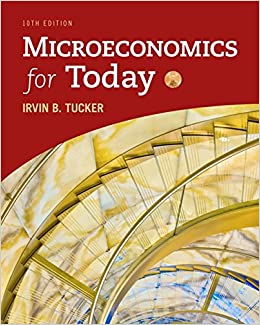


questions:
5. (a) (i) Explain how it is possible for banks to create credit. (ii) State and explain THREE limitations on the amount of credit which banks can create. (30 marks) (b) Explain how an increase in the use of 'plastic money' (credit cards, etc.) by customers affects the ability of banks to create credit. (15 marks) (c) The main objective of the European Central Bank's monetary policy is to control inflation. (i) Explain the underlined terms. (ii) The ECB reduced interest rates in 2001. Discuss the effects of this reduction in interest rates on the Irish economy. (30 marks) [75 marks] 6. (a) (i) State the Law of Comparative Advantage. (ii) State and explain the assumptions underlying this law. (30 marks) (b) The table below illustrates the Law of Comparative Advantage. Country Commodity (Hourly Production per Person) Food Machinery Country X 5 tonnes 10 units Country Y 20 tonnes 30 units Total Output 25 tonnes 40 units (i) Use the above example to show how both countries could benefit from international trade. (ii) Calculate the terms of trade for both commodities. (20 marks) (c) Ireland, as a small open economy, relies on international trade. Discuss the factors which affect the competitiveness of Irish-based firms in international trade. (25 marks) [75 marks]3. (a) Define (i) Income Elasticity of Demand. (ii) Cross Elasticity of Demand. (15 marks) (b) (i) "Income elasticity of demand is usually positive but sometimes negative". Explain, giving examples, the meaning of this statement. (ii) A consumer spends 40% of income on a certain good. After the consumer's income doubles (everything else remaining unchanged), only 30% of income is spent on the good. State whether this good is a normal or inferior good and explain your answer. (20 marks) (c) Which of the figures stated below is likely to represent: Income elasticity of demand for potatoes; (ii) Income elasticity of demand for designer clothes; (iii) Price elasticity of demand for airline seats. , -0.1, + 2.5 Explain each of your choices. (30 marks) (d) Income elasticity of demand for a good is +1.8 and sales in Year 1 are 20,000 units. If consumers' incomes are expected to rise by 5% in Year 2, calculate the expected level of sales. Show your workings. (10 marks) [75 marks] 4. (a) Define: (i) Capital (ii) Marginal Efficiency of Capital. (iii) Investment (20 marks) (b) (i) State and explain TWO reasons why investment is considered to be important for the Irish economy. (ii) State and explain FOUR factors that influence the level of investment in the Irish economy at present. (30 marks ) (c) J. M. Keynes identified three reasons (motives) for holding money. Explain the THREE reasons and outline ONE main influence on each reason. (25 marks) [75 marks]1. (a) Outline the assumptions underlying the theory of Perfect Competition. (20 marks) (b ) (i) Explain, with the aid of a labelled diagram, how a firm in Perfect Competition achieves equilibrium in the short run. (ii) Derive and explain the short run supply curve of this firm. (20 marks) (c) Discuss, with the aid of labelled diagrams, the impact which the entry of new firms would have on the short run equilibrium of existing firms, in perfectly competitive markets, earning supernormal profits. (20 marks) (d) Firms in Perfect Competition tend not to engage in advertising. State and explain TWO reasons why. (15 marks) [75marks] 2. (a) (i) Draw a short-run average cost curve and a short-run marginal cost curve. (ii) Explain the relationships between the shapes of these curves. (20 marks) (b) It is generally agreed that the long-run average cost curve initially slopes downward due to economies of scale and then slopes upward due to diseconomies of scale. These economies and diseconomies can be both internal and external. (i) Define the underlined terms. (ii) Distinguish between internal and external economies of scale, giving TWO examples in each case and explaining how each arises. (30 marks) (c) Discuss the possible social costs and social benefits of the new roads being constructed throughout Ireland. (25 marks) [75 marks]












